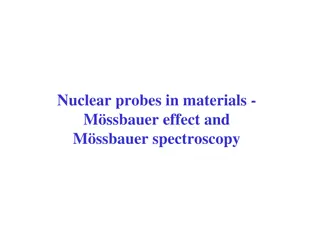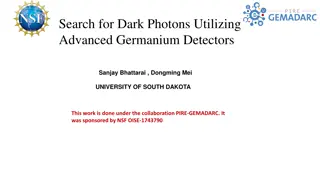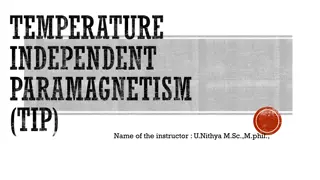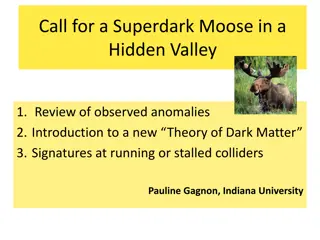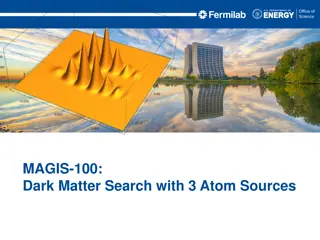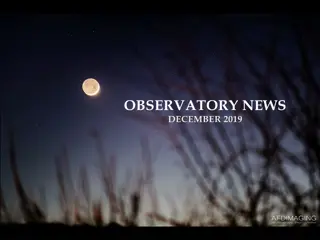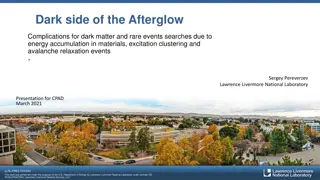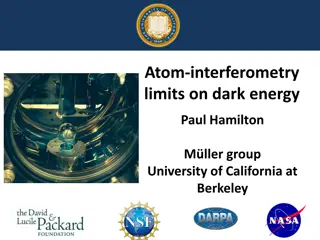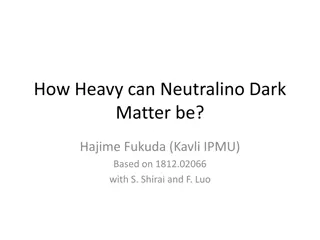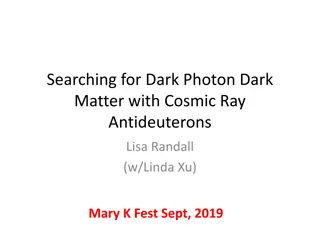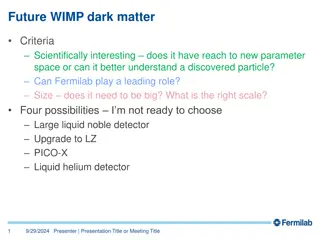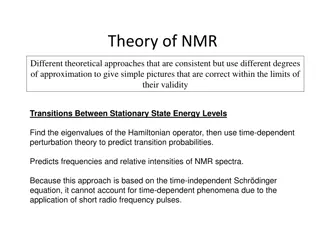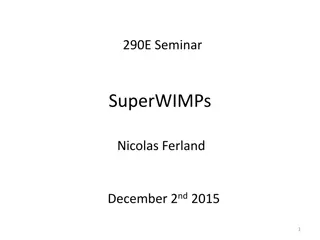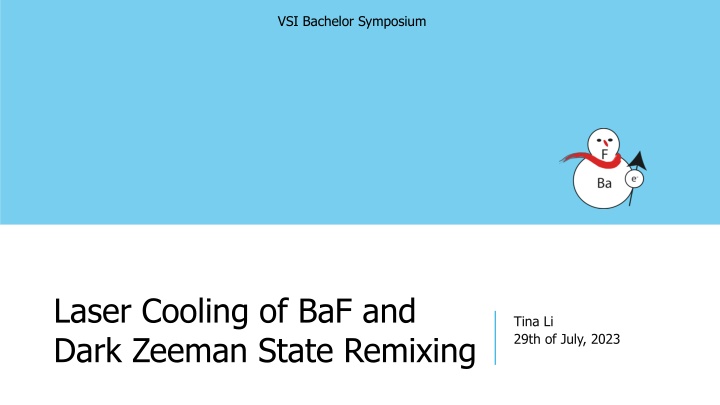
Laser Cooling of BaF Molecules and Dark Zeeman State Remixing Symposium Overview
Explore the symposium on laser cooling of BaF molecules and dark Zeeman state remixing, discussing principles, limitations, energy levels, and experimental setups. Learn about optimizing magnetic field strength for maximum scattering rate.
Download Presentation

Please find below an Image/Link to download the presentation.
The content on the website is provided AS IS for your information and personal use only. It may not be sold, licensed, or shared on other websites without obtaining consent from the author. If you encounter any issues during the download, it is possible that the publisher has removed the file from their server.
You are allowed to download the files provided on this website for personal or commercial use, subject to the condition that they are used lawfully. All files are the property of their respective owners.
The content on the website is provided AS IS for your information and personal use only. It may not be sold, licensed, or shared on other websites without obtaining consent from the author.
E N D
Presentation Transcript
VSI Bachelor Symposium Laser Cooling of BaF and Dark Zeeman State Remixing Tina Li 29th of July, 2023
OVERVIEW o Measurement of electric dipole moment of the electron (eEDM) on BaF molecules o Transverse laser cooling to collimate diverging beam o Laser cooling requires closed transition and high scattering rate o What limits laser cooling? 1. Hyperfine structure 2. Dark Zeeman states 3. Vibrational branching 1
Remixing dark states by applying magnetic field to increase scattering rate 5
PRINCIPLE OF DOPPLER COOLING 1. Absorption of photon due to Doppler shift on resonance 2. Excited, slowed molecule 3. Spontaneous emission of photon in random direction https://en.wikipedia.org/wiki/Laser_cooling 2
ENERGY LEVELS OF BaF [2] o Main cooling transition addressed | | A2 1/2, ? = 0,? = 1/2 o ??= 0 for linearly polarized laser light o |??| = 2 states do not couple to any state in excited level dark state! B ?2 +,? = 0,? = 1 B Hyperfine splitting and Zeeman sublevels Fig. from J.W.F. van Hofslot, 2023 [2] Denis, Benchmarking of the Fock-space coupled-cluster method and uncertainty estimation: Magnetic hyperfine interaction in the excited state of BaF , 2022 4
DARK ZEEMAN STATES o Remix dark Zeeman states by applying magnetic field o Zeeman precession rotates molecule into superposition of bright and dark states o Polarization angle between 0 and 90 ? o What is the optimal magnetic field strength and polarization angle to achieve maximum scattering rate? o = ???????/ ~1 2 ??? ?~1 2 ? 5
EXPERIMENTAL SET UP o Measure background magnetic field o Monitor v=1 population by measuring v=1 fluorescence o Magnetic field and polarization angle scan Figures from J.W.F. van Hofslot, 2023 6
RESULTS Background magnetic field ????~0.4 ? Molecules 7
RESULTS Magnetic field dependence At 45 polarization angle o Maximum fluorescence at magnetic field of ~ 1 G o At lower field strengths, remixing is slow o At higher field strengths, molecule and laser are Zeeman shifted out of resonance 8
SUMMARY o Transverse laser cooling for eEDM measurement o Laser cooling requires closed transition and high scattering rate o Magnetic field at ~ 1 G for optimized scattering rate o Outlook: close vibrational leak 9
THANK YOU FOR YOUR ATTENTION! 5
eEDM MEASUREMENT o Molecules leaving decelator have transverse velocity spread of 5 m/s o Transverse laser cooling to allow molecules to pass eEDM interaction zone NLeEDM collaboration, Measuring the electric dipole moment of the electron in BaF , The European Physical Journal, 2018 5
Zeeman precession of molecules in | at ? = 0, = 45 ? = 2,??= 2 Trigatzis, An ultracold molecular beam for measuring the electric dipole moment of the electron , PhD Thesis, 2020 5


